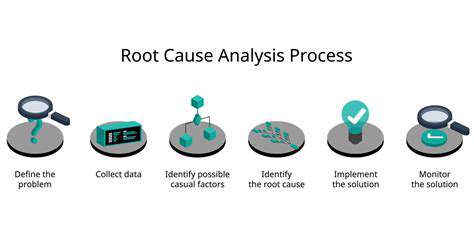
Understanding the Foundations of TCM
Traditional Chinese Medicine (TCM) is a comprehensive system of medicine that has been practiced for thousands of years. It emphasizes the interconnectedness of mind, body, and spirit, and views health as a state of balance within the body's energy system, or Qi. TCM practitioners diagnose and treat imbalances by considering the individual's unique constitution and lifestyle factors. Understanding these fundamental principles is crucial for identifying the root cause of any health issue.
Central to TCM is the concept of Yin and Yang, representing opposing yet complementary forces that govern all aspects of life. Maintaining a harmonious balance between these forces is essential for optimal health. This balance is often disrupted by external factors such as stress, poor diet, or environmental toxins. Identifying these disruptions is key to restoring the body's internal equilibrium.
Assessing the Patient's Vital Signs
TCM practitioners meticulously assess a patient's vital signs, including pulse diagnosis and tongue observation. These methods provide insights into the body's energy flow and the overall health status. The pulse, felt at different points on the wrist, reveals patterns related to the flow of Qi and the functioning of internal organs. Tongue observation considers the color, texture, and coating of the tongue to gain further information about the body's condition.
Examining Symptoms and Patterns
Careful consideration of a patient's symptoms is essential in TCM. Beyond the physical symptoms, the practitioner explores the timing, duration, and characteristics of the symptoms. Understanding the patterns of these symptoms helps in identifying potential underlying imbalances. For instance, a recurring headache occurring at specific times of the day could indicate a particular energy imbalance in the body.
Identifying the Underlying Imbalances
TCM emphasizes the interconnectedness of the body's systems. Identifying the underlying imbalances that contribute to the symptoms is crucial. This often involves analyzing the patient's lifestyle, diet, and emotional state. For example, stress and anxiety can disrupt the harmony of the body's energy flow, contributing to various health issues.
Considering Lifestyle Factors
Lifestyle factors play a significant role in maintaining health and identifying root causes. A comprehensive assessment considers diet, sleep patterns, exercise routines, and emotional well-being. Poor dietary habits, such as excessive consumption of processed foods, can lead to imbalances in the body's energy system. Stress and lack of sleep can severely affect the body's ability to regulate itself.
Considering Environmental Factors
Environmental factors also influence a person's health. Exposure to toxins, allergens, and other environmental stressors can contribute to imbalances. For example, prolonged exposure to pollutants can affect the body's energy flow and contribute to various health problems. Understanding these factors is crucial for developing appropriate treatment plans to restore balance and prevent future issues. The goal is to create a holistic approach to health that addresses the individual's overall well-being.
Herbal Remedies: Nature's Pain-Relieving Agents

Herbal Remedies for Pain Relief: A Natural Approach
Herbal remedies have been used for centuries to alleviate pain, offering a natural alternative to conventional treatments. Many plants possess compounds with analgesic properties, targeting different pain pathways within the body. This natural approach often complements conventional medicine, providing additional support for managing various types of discomfort.
Understanding the diverse range of herbal remedies is crucial for choosing the right option for a specific pain condition. Researching the potential benefits and risks associated with each herb is essential before incorporating it into a treatment plan. Always consult with a healthcare professional before starting any new herbal remedy, especially if you have existing health conditions or are taking other medications.
Commonly Used Herbal Pain Relievers
Several herbs have a long history of use in pain management. Ginger, for example, is known for its anti-inflammatory properties and can help soothe muscle aches and menstrual cramps. Chamomile, with its calming effect, can be beneficial for relieving headaches and promoting relaxation.
Turmeric, rich in curcumin, has potent anti-inflammatory and analgesic properties, making it a popular choice for joint pain and inflammation. Willow bark, which contains salicin, a compound similar to aspirin, has been used traditionally to reduce fever and relieve pain.
Potential Benefits and Considerations
Herbal remedies often offer a gentler approach to pain relief compared to pharmaceutical drugs, potentially minimizing side effects. Many herbs possess anti-inflammatory properties, which can be beneficial for conditions like arthritis and other inflammatory conditions.
However, it's crucial to recognize that herbal remedies are not without potential risks. Some herbs can interact negatively with medications, and individual sensitivities can vary. Always consult a healthcare professional for personalized advice regarding herbal remedies, especially if you have underlying health conditions or are pregnant or breastfeeding.
Safety and Precautions
Before using any herbal remedy for pain relief, it's essential to research its potential benefits and risks thoroughly. Always prioritize safety and consult with a healthcare professional. Herbal remedies should be considered as complementary therapies, not as a replacement for conventional medical treatments.
The potency of herbal remedies can vary significantly depending on factors like the quality of the plant material, the method of preparation, and the individual's specific needs. Always ensure you are using reputable sources for herbal products to avoid potential contaminants or adulteration.
Finding Reliable Information and Resources
Reliable information about herbal remedies is crucial for safe and effective use. Consult reputable sources like academic journals, evidence-based websites, and qualified healthcare professionals. Avoid relying solely on anecdotal evidence or unverified information.
Many herbalists and naturopathic practitioners can provide valuable insights and support in understanding and utilizing herbal remedies safely and effectively. Be sure to choose qualified practitioners with a proven track record.